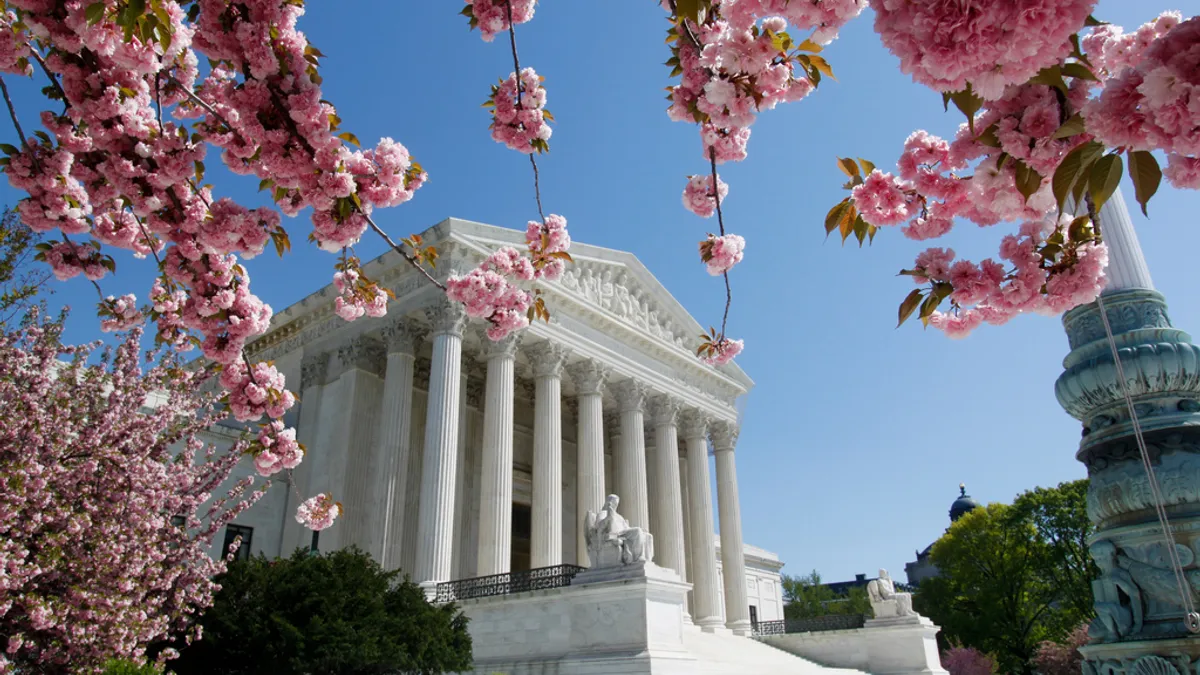Dive Brief:
- It's been three months since the U.S. Supreme Court heard arguments over FERC Order 745, and demand response advocates say the wait for a ruling could mean good news for the agency, but Greenwire reports that there are some other alternatives as well.
- Initial reports following the October oral arguments suggested the court, with Justice Samuel Alito recusing himself, had leaned towards a quick 4-4 split decision that would have allowed the lower court's ruling to stand.
- The D.C. Circuit Court vacated FERC Order 745 in 2014, over concerns the federal agency was dipping into the regulation of retail markets when it directed payments for demand response.
- There is also speculation that the high court is waiting to hear arguments in two other jurisdiction-related power cases next month. A ruling is due by the end of June.
Dive Insight:
The longer the Supreme Court waits to make a decision on FERC Order 745, the more confident are advocates who say it will mean billions of dollars saved for consumers.
"We've been feeling like the longer it takes, the better it is for FERC," Natural Resources Defense Council's Allison Clements told Greenwire.
Justice Alito recused himself from the case, making a split decision possible. That would defer to the D.C. Circuit Court's decision that FERC had overstepped, and based on the content of last year's oral arguments some observers had expected that outcome. Such a decision could have been issued with just a few lines, so the longer it takes, the more optimism it gives supporters.
But as always, predicting the courts is a fool's errand. Vanderbilt law professor Jim Rossi told Greenwire it's a bit "like reading tea leaves." Rossi was a co-author on an amicus brief supporting FERC.
During arguments, Justice Anthony Kennedy said it is clear that wholesale and retail markets affect each other but questioned where to draw the line. Chief Justice John Roberts suggested a boundary is needed to curtail FERC from growing past its regulatory reach.
There has also been speculation the Justices are waiting for two cases on the docket next month, W. Kevin Hughes v. PPL EnergyPlus LLC and CPV Maryland LLC v. PPL EnergyPlus, before making a ruling. The associated cases both focus on FERC's jurisdiction, and observers say the Justices may want more perspective before rendering their Order 745 opinion.
The court’s decision could have far-reaching consequences beyond the traditional demand sector, Former FERC Chair Jon Wellinghoff warned at a storage conference last year. If the justices decide that demand response is primarily a retail resource, that line of reasoning could be extended to a whole litany of customer-sited resources trying to gain access to wholesale markets, like energy storage.
Utilities and technology vendors are busy at work trying to devise techniques to aggregate distributed resources so that they can be bid into larger markets and act like traditional generation resources. But the efforts of companies like Stem, which last year announced it integrated an aggregation of customer-sited storage into the CAISO real time market, could be thwarted if the Supreme Court decides they are retail resources. This could severely constrain the ability of customers to realize all of the value proposition of customer-sited storage and other DER systems, slowing the growth of the sector.















